- Zenith is the position on the celestial sphere that is situated directly above the observer’s position. Another way to define it is as a direction that points straight up from a specific location. In other words, it is one of two vertical directions that are perpendicular to the horizontal plane at the observer’s point. The concept of “up” is more precisely defined in fields such as astronomy, geophysics, and related sciences (like meteorology), where it refers to the direction that is opposite to the gravitational force at a given location.
Similar ideas
The concept of the celestial coordinate system is employed in the field of astronomy to depict the locations of celestial bodies in the sky or specific points on an imaginary celestial sphere. The celestial sphere utilizes two angular measurements (or arcs) to precisely determine the positions of these objects. As a result, the celestial coordinate system functions as a spherical coordinate system, where the third coordinate – distance – is frequently unknown and insignificant.
The orbital node is a point on the celestial sphere where the orbit of a celestial body intersects with a reference plane. In the solar system, this reference plane is the ecliptic plane. The celestial equator and the equatorial coordinate system are commonly used for tracking celestial bodies at these points. It’s important to note that there are two orbital nodes, each with its own distinction.
The system of celestial coordinates known as ecliptic coordinates:49 utilizes the ecliptic plane as its principal plane and the pole of the ecliptic as its pole. This coordinate system is employed in studying the movements of celestial bodies within the solar system, many of which have orbital planes that closely align with the ecliptic plane. Additionally, it is utilized to observe the Sun’s apparent motion across the sky over the course of a year:30.
Stellar days refer to the duration of a celestial body’s rotation around its own axis within an inertial frame of reference, typically in relation to distant stars. On Earth, this is the length of time it takes for one complete revolution on its axis relative to distant stars.
References in literature
The concept of the celestial sphere is frequently mentioned in various works of literature. The celestial sphere is an imaginary sphere with a diameter that can be of any size. Its center is positioned at the point of observation. To visualize the celestial sphere, a plane can be drawn through its center, perpendicular to a plumb line relative to the surface of the Earth. This plane intersects with the celestial sphere, forming a great circle known as the mathematical or true horizon. The zenith (Z) and nadir (Z?) are two points on the celestial sphere that are diametrically opposed to each other and located at the intersection of the plumb line. The zenith is directly above the observer’s head, while the nadir is not visible beyond the Earth’s surface.
Let’s examine the illustration (Fig. 14, a). Suppose the observer is positioned at point M, with point N representing the pole of the world. The circle HASNRBQ, known as the celestial meridian, passes through the observer’s zenith and the pole. Determining the observer’s latitude is a straightforward task; one simply needs to measure the height of the pole above the horizon NR using a protractor, as it corresponds to the latitude of the location.[4] When looking from M towards N, the observer sees the southern point directly ahead. The Sun’s daily path on this diagram will be represented by a straight line, with the portion above the horizon line representing the day path and the portion below it representing the night path. The line AQ represents the Sun’s path during the equinoxes; as shown, the day path is equal to the night path during this time. SB represents the Sun’s path during summer, parallel to AQ but with most of it lying above the horizon, leaving only a small portion (due to the short summer nights) below the horizon. The Sun passes through one 24th part of these circles every hour, which equals 360°/24=15°. However, three hours after noon, the Sun does not align with the southwestern point on the horizon, as one might expect (15° x 3 = 45°). The reason for this discrepancy is that the projections of equal arc lengths on the plane of the horizon are not equal to each other.
Let’s consider the diagram (Fig. 14, a). Suppose the observer is located at point M; point N represents the North Pole; the circle HASNRBQ, known as the celestial meridian, passes through the observer’s zenith and the North Pole. It is easy to determine the observer’s latitude by measuring the angle of the North Pole above the horizon NR; this angle corresponds to the latitude of the location. When looking from M towards H, the observer is facing a point in the south. The Sun’s daily path on this diagram is depicted by a straight line, with part of it above the horizon (day path) and part below it (night path). The line AQ represents the Sun’s path during the equinoxes; as we can see, the day path is equal to the night path during this time. SB represents the Sun’s path during summer; it is parallel to AQ, but most of it is above the horizon, with only a small portion (remember the short summer nights) below the horizon. On these circles, the Sun passes one 24th of their total length each hour, i.e. . However, three hours after noon, the Sun is not at the southwest point of the horizon, as one might expect (15° × 3 = 45°); this discrepancy occurs because the projections of equal arcs of the Sun’s path on the plane of the horizon are not equal to each other.
Visualizing the world as described by Strabo and comparing it to modern physical geography poses a challenge. Strabo was primarily focused on providing descriptive treatises, and while he didn’t offer any original ideas, he did critique the works of other scholars. He found amusement in the technical aspects of astronomy and mathematics, but he firmly avoided delving into the substance of these subjects. When he lacked information or couldn’t comprehend the conclusions of others, he dismissively labeled the topic as “of no value to the geographer,” often suggesting that interested individuals consult Hipparchus for further details. As a result, it’s difficult to definitively determine if Strabo was a true scholar and, if so, how proficient he was. Nevertheless, when describing different locations, he often employed the same methods as Eratosthenes and Hipparchus, using the stars as indicators of distance. For instance, he noted that in Bernicus, in the Arabian Gulf, and in the country of the Troglodytes, the sun reaches the zenith on the summer solstice, resulting in a longest day of 13.5 equinox hours. Additionally, he mentioned that in the Arctic circle, almost the entire Big Dipper is visible except for the legs, the tip of the tail, and one of the stars of the square. Furthermore, if one were to travel to Pontus Euxineus (Black Sea) and sail approximately 1400 stadia northward, the longest day would already be 15.5 equinox hours. In this region, the Arctic circle stands directly overhead, with the star on the neck of Cassiopeia resting on the Arctic circle, while the star on the right elbow of Perseus lies slightly to the north of it.
For those of us residing in the middle region, we observe the Earth’s axis tilt through the Sun’s behavior. During winter, the Sun descends below the celestial equator and remains low on the horizon throughout the day. Conversely, in summer, the Sun ascends above the equator (reaching a maximum tilt of 23.4°) and rises earlier, sets later, and nearly reaches the zenith at noon. During the fall and spring equinoxes, the Sun crosses the celestial equator at specific points known as the fall equinox point and the spring equinox point. These points represent the intersection of the celestial equator and the ecliptic, and are crucial in various celestial coordinate systems.
In modern times, polarized light treatment has become a widely used method in leading clinics worldwide for treating various ophthalmological conditions, as well as vegeto-vascular dystonia, cerebral arachnoiditis, and other ailments. This further reinforces the notion that sometimes the best answers can be found by looking to the past. In fact, ancient healers in India also utilized polarized light to treat eye diseases, advising their patients to observe the reflections of the sun, moon, and stars in water. Additionally, they were encouraged to gaze at the sky, as it too emits polarized light. The scattered light in the sky is simply the sunlight that is repeatedly reflected off the molecules in the air and refracted through water droplets and ice crystals. These reflections and refractions result in the polarization of light. This phenomenon is most noticeable when the sky is clear and the sun is low in the horizon. By observing such a sky through a polaroid filter, one can observe that the brightness of the sky directly above changes as the filter is rotated, while the sky near the horizon, about 90 degrees away from the sun, appears darker (it is important to avoid looking directly at the sun for extended periods of time!).
Continuation of Related Concepts
The horizontal coordinate system, also known as the horizon coordinate system, is a celestial coordinate system that uses the mathematical horizon as its principal plane and the zenith and nadir as its poles. This system is commonly used for observing stars and tracking the movement of celestial bodies in the solar system from the Earth’s surface, using only the naked eye, binoculars, or a telescope with an azimuth setting of 85 degrees. Throughout the day, the horizontal coordinates of not only the planets and the Sun, but also the stars, undergo continuous change due to the Earth’s daily rotation.
A celestial luminary refers to an astronomical entity that emits its own light or reflects light. It is also known as a “celestial body”. In the field of spherical astronomy, a celestial luminary can be interpreted as the projection of an astronomical object onto the celestial sphere. Celestial luminaries encompass the Sun, stars, Moon, planets, satellites, asteroids, comets, and other celestial bodies. In works of fiction, the terms used for these celestial luminaries have been adopted to describe other planets. For instance, planets with their own “suns” are often depicted.
The celestial sphere is a fictitious sphere with an arbitrary radius where celestial bodies are projected. It is used to solve various astrometric problems. The observer’s eye is considered as the center of the celestial sphere, whether they are located on Earth’s surface or in other parts of space (such as the center of the Earth). For a terrestrial observer, the rotation of the celestial sphere replicates the daily motion of the celestial bodies in the sky.
In astronomy, culmination refers to the moment when the center of a celestial body passes through the celestial meridian during its daily movement. Alternatively, it can also refer to the passage of the center of a celestial body through the point where the daily parallel of the body intersects with the celestial meridian.
The Terminator, derived from the Latin word “terminare” meaning “to stop,” refers to a luminous division that separates the illuminated portion of a celestial body, such as a space body, from the unilluminated part. The terminator of a spherical body always appears as a semi-ellipse and takes the form of a straight line at the end of the first quarter and the beginning of the last quarter.
The Horizon, originating from the Greek word “ὁρίζων” which literally means “limiting,” denotes the boundary between the sky and the earth or water surface. It can also encompass the visible portion of this surface. The horizon can be divided into the visible horizon and the true horizon. The angle between the plane of the true horizon and the direction towards the visible horizon is referred to as the horizon inclination, also known as horizon depression.
Movements of celestial bodies on the celestial sphere only display their visible, or apparent, movements as observed from Earth. These movements are not related to the daily rotation of the Earth, as that is represented by the rotation of the celestial sphere itself.
A Lissajous orbit is a type of orbital trajectory that allows a body to move around a Lagrangian point within a three-body system without the need for engines. Lyapunov orbits, on the other hand, are curves that exist in the same plane as the two main bodies in the three-body system. Lissajous orbits, however, can extend into both this plane and perpendicular to it, following Lissajous curves. Halo-orbits also include components in the perpendicular plane, but halo-orbits, in.
The orbital velocity of an object (typically a planet, natural or artificial satellite, or multiple star) refers to the speed at which it revolves around the barycenter of the system, usually a more massive object.
Orbital elements, also known as celestial body orbital elements, are a collection of parameters that characterize the size and shape of a celestial body’s orbit (or trajectory), the position of the orbit in space, and the location of the celestial body within the orbit.
Universal Time, also known as UT, is a time scale that is based on the rotation of the Earth. It serves as a modern replacement for Greenwich Mean Time (GMT), although sometimes GMT is mistakenly used as a synonym for Coordinated Universal Time (UTC). Universal Time was first introduced on January 1, 1925. It’s important to note that the term “Universal Time” is polysemous, meaning it has multiple meanings. The two main versions of Universal Time are UT1 and UTC (more details below).
The tilt of the axis of rotation refers to the angle at which the axis of rotation of a celestial body deviates from being perpendicular to the plane of its orbit. In simpler terms, it’s the angle between the equator of a celestial body and its orbit.
An epoch in astronomy, derived from the Greek word έποχή meaning “stop”, refers to a specific moment in time when astronomical coordinates or orbital elements are defined. These coordinates can be recalculated from one epoch to another, taking into account precession and proper motion.
The term ecliptic, originating from the Latin phrase (linea) ecliptica and the Greek word ἔκλειψις meaning “eclipse”, represents a large circle on the celestial sphere along which the Sun appears to move annually. It corresponds to the plane of the Earth’s orbit around the Sun, known as the ecliptic plane. In a more precise definition, the ecliptic is the intersection of the celestial sphere with the orbital plane of the barycenter of the Earth-Moon system.
Solar days refer to the duration of time it takes for a celestial body to complete one full rotation around its axis in relation to the center of the Sun. More precisely, it is the time interval between two culminations (passing through the meridian) of the Sun’s center in a specific location on Earth (or any other celestial body).
An Earth ellipsoid is a type of ellipsoid that is chosen based on its dimensions to best match the overall shape of the Earth, known as the quasigeoid figure. This ellipsoid can be a universal representation of the Earth or it can be tailored to specific regions or parts of the Earth (known as a reference ellipsoid).
A halo orbit is a type of three-dimensional orbit that occurs near the Lagrange points L1, L2, or L3 in a problem of orbital mechanics involving three bodies. While the Lagrange points themselves are simply points within a rotating frame of reference that is influenced by two massive bodies, it is possible for objects to follow orbital paths near these points. Within this rotating frame of reference, halo orbits are formed as a result of the gravitational attraction exerted by the two massive bodies, as well as the Coriolis force and centrifugal force caused by the non-inertial nature of the frame of reference.
The International Celestial Reference System (ICRS), also known as the International Astronomical Reference System, has been the standard celestial coordinate system since 1998. It was adopted at the 23rd IAU congress in 1997. The reference point for this system is the barycenter of the Solar System. The coordinates in the ICRS are very close to the equatorial coordinates of the J2000.0 epoch, with only a small discrepancy.
A circular orbit is an orbit where all points are equidistant from the center point. It is formed by a body orbiting around a fixed axis. A circular orbit can be seen as a special case of an elliptical orbit with zero eccentricity. In our Solar System, Venus (eccentricity 0.0068) and Earth (eccentricity 0.0167) have orbits that are nearly circular.
The equation of time represents the discrepancy between mean solar time (SSV) and true solar time (TSV), which can be expressed as UV = SSV – TSV. This deviation remains constant for any observer located anywhere on Earth. To determine the equation of time, one can refer to specialized astronomical publications, utilize astronomical software, or compute it using the provided formula.
Astronomical refraction, also known as atmospheric refraction, refers to the bending of light rays from celestial objects as they pass through Earth’s atmosphere. This phenomenon alters their apparent position in the sky.
Earth’s orbit refers to the path followed by our planet as it orbits the Sun, with an average distance of approximately 149.6 million kilometers (152.1 million km at aphelion and 147.09 million km at perihelion).
The geoid, which comes from the Greek word for Earth and species, is a closed convex surface that closely aligns with the calm surface of water in seas and oceans. It is also perpendicular to the direction of gravity at any given point. This geometric body deviates from the shape of a rotating ellipsoid and represents the gravitational potential of the Earth’s surface. It is a crucial concept in geodesy.
An elliptical orbit, in the field of astrodynamics and celestial mechanics, refers to a Keplerian orbit that has an eccentricity value that is less than 1. It’s worth noting that a circular orbit is considered a specific case of an elliptical orbit, only when the eccentricity is zero. In a more precise definition, circular orbits are not included in the category of elliptical orbits. Therefore, elliptical orbits are characterized by having an eccentricity value that is greater than zero but less than one. In a broader sense, an elliptical orbit can be described as a Keplerian orbit that possesses negative energy. This definition encompasses radial orbits as well.
The term “nadir” is derived from the Arabic word “نظير” which means “opposite”. It refers to the direction that points directly downward from a specific location. This direction is one of the two vertical directions that are perpendicular to the horizontal plane at a given point. To provide a more precise definition, scientists in fields such as astronomy, geophysics, and meteorology define nadir as the direction that aligns with the gravitational force at a specific point.
Repetitive or retrograde motion of the planets refers to the observed motion of the planets from the perspective of Earth. This motion occurs against the background of the stars on the celestial sphere and moves from east to west, which is opposite to the motion of the Sun (annual) and the Moon.
The Geographic pole is the point where the Earth’s axis of rotation intersects with its surface. There are two geographical poles: the North Pole, located in the Arctic (central part of the Arctic Ocean), and the South Pole, located in Antarctica.
Synchronous rotation, also known as tidal capture, refers to the situation where a satellite’s rotation period around its axis matches its rotation period around the central body. As a result, the satellite always faces the central body on the same side, as it completes one orbit around its axis in the same amount of time it takes to orbit around its partner. Tidal entrapment occurs during mutual motion and is a common characteristic of many of the large natural satellites in the solar system.
The movement of the equinoxes, known as the advance of the equinoxes, refers to the gradual change in the positions of the vernal and autumnal equinoxes. These equinoxes mark the points where the celestial equator intersects with the ecliptic, and they shift slightly each year in accordance with the apparent annual motion of the Sun. Specifically, the vernal equinox occurs earlier each year by approximately 20 minutes and 24 seconds. This translates to an angular offset of about 50.3″ per year, or 1 degree every 71.6 years. This is the current rate of offset.
Degree, minute, and second are commonly used units of measurement for plane angles. These units are also employed in cartography to ascertain the coordinates of any point on the Earth’s surface and to determine an azimuth.
Extraterrestrial skies refer to the perspective of space from the surface of a celestial body other than Earth. This viewpoint can differ from what is observed from Earth due to various factors. One of the most significant factors is the atmosphere of the celestial body or the absence thereof. The color of the sky is influenced by the density and chemical composition of the atmosphere. The presence or absence of clouds can also affect the color. Additionally, other astronomical objects, such as stars, satellites, planets, and rings, may be visible from the surface.
The galactic coordinate system is a system of celestial coordinates that has its origin at the Sun and its reference direction from the center of the Milky Way galaxy. The galactic coordinate system’s plane aligns with the plane of the galactic disk. Similar to geographic coordinates, galactic coordinates include both latitude and longitude.
Opposition refers to the position of a celestial body in the solar system where the difference between the Sun’s ecliptic longitude and the celestial body’s ecliptic longitude is 180 degrees. As a result, this celestial body is approximately aligned with the Sun-Earth axis and can be seen from Earth in the opposite direction from the Sun. Opposition can only occur for planets and other celestial bodies that are located farther away from the Sun than Earth.
A super moon is a special event in the field of astronomy that happens when a full or new moon coincides with perigee, which is the point of closest approach between the Moon and the Earth. This occurrence is a result of the Moon’s elliptical orbit around our planet. As a result of this fascinating phenomenon, it is possible to observe the Moon’s disk appearing larger than usual from our vantage point on Earth.
Right ascension (α, R. A. – derived from the term “right ascension”) refers to the measurement of the arc along the celestial equator, starting from the point of the vernal equinox and ending at the circle of declination of a celestial body. Right ascension serves as one of the coordinates in the second equatorial system (with the first being the hour angle). The second coordinate is known as declination.
The apex in astronomy refers to a specific point on the celestial sphere that an observer’s velocity, relative to a reference frame, is directed towards. On the other hand, the antiapex is the point opposite to the apex.
Rise is the specific moment when the upper edge of a celestial body becomes visible above the horizon. Additionally, the concept of ascension can encompass the entirety of the process of a celestial body crossing the visible disk of the horizon.
Retrograde motion is the motion that occurs in the opposite direction of direct motion. This term can refer to the direction of rotation of one celestial body around another in its orbit, or the rotation of a celestial body around its own axis. It can also encompass other orbital parameters such as precession and nutation. In the context of planetary systems, retrograde motion typically refers to motion that is contrary to the rotation of the central body, which is the main object in the system.
An occultation is a celestial phenomenon where one celestial body passes in front of another, obscuring part of it, as seen from a specific viewpoint.
The pole of the ecliptic refers to a point on the celestial sphere where it intersects with the perpendicular to the plane of the ecliptic. This point serves as the pole for the ecliptic system of celestial coordinates.
In today’s world, orienteering on the ground may appear unnecessary due to the availability of navigation devices. However, there may come a time when such devices are not accessible, and in such emergency situations, one can rely on their own knowledge to orient themselves.

In order to identify the cardinal directions on a clear day, it is necessary to have knowledge of the sun’s zenith. One method is to insert a stick into the ground and mark the line of the resulting shadow.
Regularly measure the length of the shadow cast by the stick. This can be done using a rope with knots or by creating notches on the ground. When the shadow from the stick becomes as short as possible (no more than 7 cm), that is the moment when the sun reaches its highest point, also known as the zenith.
With this information, you can easily navigate your surroundings. If you face away from the sun at this time, you will be facing north, with south behind you, west to your left, and east to your right.
In theory, the zenith can be calculated using the formula h = 90° – φ + δ, where h represents the sun’s height above the horizon, φ is the latitude of the observation location, and δ is the sun’s declination on a given day.
Similarly, if h > 90°, then the sun is on the opposite side of the zenith at an altitude of 180° – h. In other words, the latitude of the observation site should be equal to the sun’s declination for it to pass through the zenith.
To determine the sun’s declination for a specific date, you can find information in the Astronomical Calendar.
If you only require data on the sun’s zenith in a particular area during a specific time of year, you can visit the Meteostatistics website. For example, http://barnaul-meteo.ru/alejsk/pivot/solar-geometry.
These resources contain long-term observation data, including the average monthly cosine of the sun’s zenith angle, the average monthly zenith at Greenwich, and the average monthly maximum angle of the sun relative to the horizon. This angle is measured in degrees.
The day when the sun’s zenith is at the Northern or Southern Tropic is known as the winter or summer solstice (June 22nd and December 22nd). During this time, one hemisphere experiences the shortest day and the other hemisphere experiences the shortest night. During the equinoxes, day and night are equal in length at every point except the poles, and the sun’s zenith is at the equator.
Forgot your password?
Not registered yet?
This site is protected by reCAPTCHA and the Google Privacy Policy and Terms of Service apply.
Frequently, you may hear the phrase “the sun is at its highest point”. What is the significance of this statement? Where in the sky can you spot the sun at this particular moment, and how does this location differ from its other positions and states? When does this occur during the day or year? And if the sun is at its zenith, what implications does it hold for the people living on Earth?
Essential details regarding the Sun
The Sun is the nearest celestial object to the planet Earth, serving as the primary component of the solar system. Resembling a sphere, it is predominantly composed of incandescent gases, with a surface temperature nearing 5505 ° C, whereas its core reaches a scorching 13.5 million degrees.
In terms of size, the Sun surpasses planet Earth by approximately 110 times, boasting a diameter of 1,392,000 kilometers.

The Sun has an atmosphere made up of three layers – the photosphere, the chromosphere, and the solar corona. The photosphere is the layer that emits radiation that is visible to humans. During a total solar eclipse, the solar corona, which is much larger in diameter than the Sun itself, can be observed.
The Sun’s mass is 333 thousand times greater than that of the Earth, but its volume is even larger – 1 million 304 thousand times, which means that it has a lower density.
The energy that our planet receives from the Sun is only a small fraction of all the energy that the star emits, but it is many times greater than all the energy that is artificially produced on Earth.
The distance between Earth and the Sun is approximately 149.5 million kilometers, which is measured in terms of time rather than linear units due to its enormous size. It takes sunlight 8 minutes and 18 seconds to reach our planet, traveling at a speed of 300,000 kilometers per second.
Constantly in motion, the entire solar system is heading towards the Lyra constellation at a speed of 20 kilometers per second.
What is the highest point in the sky called?
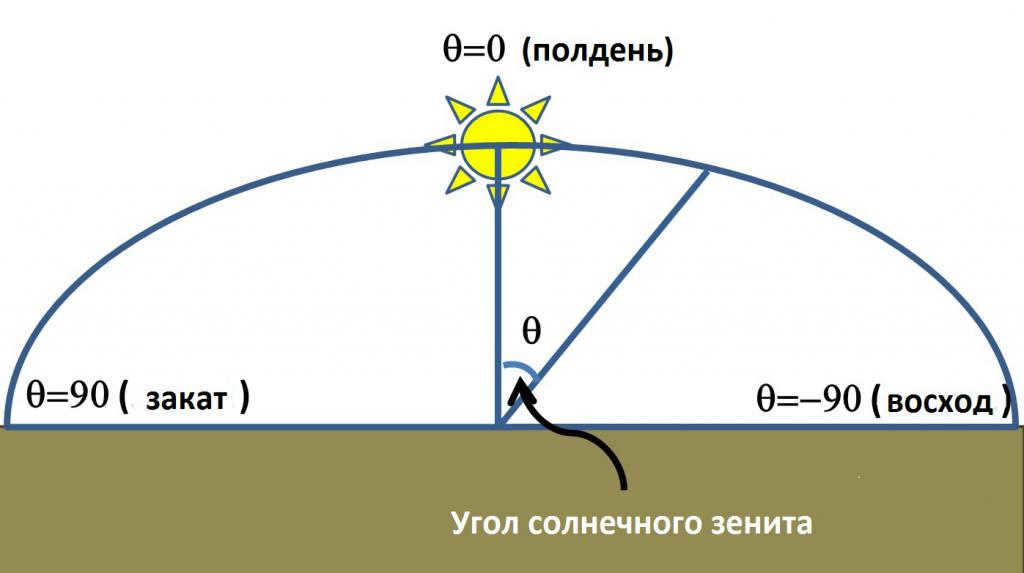
The zenith is the highest point in the sky, meaning that when it is said that the sun is at the zenith, it is directly above the observer’s head. At this point, the sun’s rays fall perpendicular to the surface of the earth, creating right angles. Therefore, if objects do not cast shadows, it indicates that the sun is at its zenith.
However, colloquially, the term zenith is used to describe the position of the sun, which is only conditionally considered to be at the zenith. This is due to the specificities of celestial bodies and their spatial relationships with each other, which means that the sun’s rays will not fall on every part of the earth at a 90-degree angle.
The nadir is the point on the plumb line that is opposite to the zenith and is below the horizon line.
How the solar zenith moves throughout the year

Due to the constant movement of celestial bodies in relation to each other and their own axes, the sun’s zenith position changes throughout the year. It moves from tropic to tropic at an approximate rate of 1° every four days (or 3.8° more precisely), which would be equivalent to 2° in a week. This means that predicting the sun’s zenith position relative to the Earth is relatively straightforward.
By knowing the dates of the solstices, one can estimate the latitude at which the sun will be directly overhead on any given day.
Twice a year, on March 21 and September 23, the Sun reaches its highest point above the equator, a phenomenon known as the zenith. During these calendar days, when the duration of light and darkness is equal, we experience either the autumn or the vernal equinox. Therefore, when calculating the latitude of the Sun’s position at its zenith, it is advisable to consider these significant dates as a starting point.
As an example, to calculate the latitude at which the sun will be on April 12th, the Russian Day of Cosmonautics, we need to determine the number of days that have passed since the nearest reference date (which is the vernal equinox on March 21st). There are 22 calendar days between the reference date and April 12th. If the sun’s position shifts by 1 degree every 3.8 days, then in 22 days its location will change by 22 : 3.8 = 5.7 degrees. Since precise calculations are not necessary in this case, we can round the result to 6 degrees. This is the angle at which the sun’s position in relation to the Earth, in the direction of its movement north of the equator, will change.

To conveniently determine the coordinates of objects on Earth, the entire planet is divided into horizontal and vertical lines. The horizontal lines are known as parallels, with the equator being the longest among them. When referring to the position of a point on Earth using parallels, the term “latitude” is used.
The vertical lines are called meridians, which correspond to longitude. The numerical values for latitude and longitude are expressed in degrees.
Due to the Earth’s shape and its 23° tilt on its axis relative to the Sun, not every point on Earth can experience the zenith, which is the position of the luminary relative to our planet. This phenomenon is inaccessible for most people.
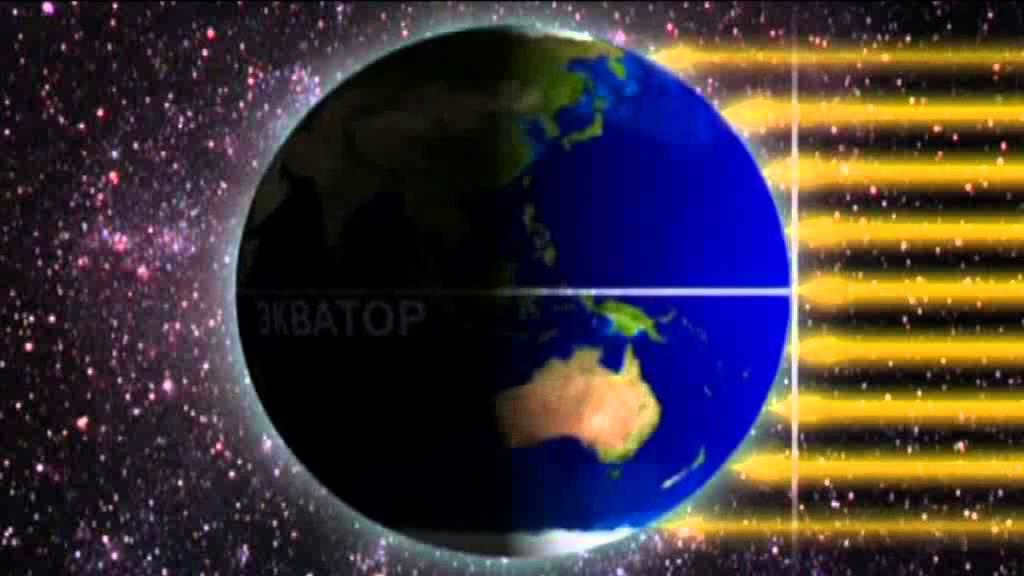
The sun’s rays are perpendicular to the Earth’s surface only at the equator and within the tropics – the regions located between the lines of latitude above and below the equator.
The tropics are divided into two regions: the Northern Tropic, named after the constellation Cancer, and the Southern Tropic, named after Capricorn. These regions mark the areas where the sun’s zenith position can be observed at noon.
On June 22, the day of the summer solstice, the sun will be directly overhead the Northern Tropic. On December 21, the day of the winter solstice, the sun will be directly overhead the Southern Tropic. In between these dates, the sun’s zenith position can be observed at any latitude, twice a year.
How the sun, at its highest point in the sky, inspires poets
The celestial bodies, which rule over the day and dominate the night, serve as a muse for artists in creating paintings, music, and literature in various forms.
Kira Tikhonova (formerly known as Danilyants), a young poetess from Moscow and the winner of the Pushkin Youth Festival “On a Par with the Century,” is one of those inspired by the sun’s brilliance.
The Sun at Its Zenith
At the peak of the sky, the sun shines bright,
As I tread through the snowy street,
Dragging a sled, heavy as solid iron,
With glossy skids that glide effortlessly.
And amidst the laughter and screams of the crowd.
I am descending,
♪ Towards a heap of struggling faces ♪
♪ Burning with icy coldness ♪
The snow resembles the tundra, it’s a children’s celebration!
We have constructed forts
We have been outdoors all day
With our garments completely drenched.
We are engaged in a snowball battle
We return home under the darkness
♪ As hot as a sauna ♪
We are drained and hung up!
The sun is at its peak, our shorts are covered in dust.
In a group of giggling kids
Red with rust on the bicycle handlebars
An old bicycle is being ridden
My knees are once again green and bruised.
The sun is like it is in the tropics – thirty-five degrees!
We are delighted to chase and catch up
In this scorching sun
No iPad, no tablet,
# Ten years before the first computers
A childhood filled with joy and brightness
Etched in my memory through the mist of time
The sun shining high in the sky. Wearing overalls.
My eldest child, wearing a pensive expression
♪ The snow playfully tickling the tip ♪
Of a brand-new shoe…
Victoria Vikolskaya, a budding writer from the town of Mytishchi near Moscow.
Sun shining at its peak
I adore those crystal-clear days,
When the sun reaches its zenith.
And it reaches the zenith in the morning,
And in the evening it reaches the zenith
Not only at noon
Even if it’s freezing outdoors
Even though it’s chilly
The sun invites you to go for a stroll
As it reaches its highest point
♪ The morning sun illuminates the world with its rays ♪
# It’s a very common occurrence
But there’s something remarkable about it.
And what makes it remarkable?
It’s like this today, it was like this yesterday
What’s remarkable is what’s unique
What the sun doesn’t mind
What time it is anywhere in the world
Regardless of the time anywhere in the world
♪ The morning sun brightens up the world with its rays ♪
There is a beam of light on a leaf.
Or the tall, powerful cliffs
A beam of sunlight.
Even if the clouds are angry
If there is one beam of sunlight
It means the days are not overcast.
And if the days are not overcast
♪ No matter how faint that beam is ♪
It is stronger than the clouds!
Because it broke through the clouds,
Presented by the powerful sun
♪ If a beam breaks through the clouds ♪
It is not an overcast day,
If there is a single beam
Then the sun is at its zenith!
It may not be scientifically correct, but it is warm and really sunny.
The symbol of the sun at its highest point

In every doctrine that relies on symbolism, the sun holds a special position. When it comes to interpreting dreams, the sun as a symbol can have various meanings depending on the different sources.
If you have dreamt of the sun at its zenith, what does it signify and how should you interpret such a vision? Here are several possible interpretations of this dream:
- It could symbolize the fulfillment of ambitions and the realization of all the dreamer’s possibilities, which may be either limited or boundless, depending on the interpretation.
- It could signify a successful choice of admirers and the successful execution of a well-prepared plan leading to personal prosperity.
- It could represent happiness and the rewarding of reasonable ambitions.
- It could suggest career advancement.
- It could indicate good luck in all aspects of life.
One can say that the sun has the ability to bring joy to individuals, providing warmth and offering its protection not only during the daytime, when they are awake, but also at night, even while they sleep. There is no need to have faith in subtle correlations between events and occurrences, or have extensive scientific knowledge to make positive forecasts come to fruition – simply having unwavering belief in the good and promising future is sufficient.
When the Sun is directly overhead, it is at its highest point in the sky, known as the zenith. This moment, when the Sun crosses the meridian, is referred to as true noon. The exact time of true noon varies depending on factors such as the day of the year, the difference in longitude between the location and the time zone, and Daylight Saving Time.
During true noon, Muslims perform the midday namaz prayer.
Reply to comment… Comment….
If we cannot perceive the world as it truly exists, let us strive to comprehend it as best we can… – Aug 4, 2018
The sun reaches its highest point, known as zenith, directly above the observer at true noon. This occurrence varies depending on the location and season, and may not precisely align with the “official” local noon time.
In Jules Verne’s “The Mysterious Island,” there is an intriguing scene where the characters determine the noon by observing the position of the sun… Read more
Reply to the comment… Comment….
To determine the sun’s zenith, one can insert a stick into the ground and measure the length of its shadow. When the shadow is at its shortest length, that indicates the sun is at its zenith.
This phenomenon is influenced by the latitude of the measurement location and the time of year, except for places on the equator.
Ivan Vasilyevich changes his occupation
Oracle
(69859)
You are partially incorrect…
Read Electronik’s response…
Constrictor Engineer
Higher Intelligence
(189516)
10 years ago
It is very straightforward.
When the sun is at its highest point in the sky, it is directly overhead and no shadows are cast by objects.
P.S. The sun’s upper culmination at true noon has no connection to the zenith
Ivan Vasilyevich changes his professionOracle (69859)
The term zenith also refers to the highest point reached by a celestial body during its apparent orbital motion relative to a given point of observation.
This is a quote from your link!
Constrictor Engineer
Higher Intelligence
(189516)
Ibid “it can only be reached technically accurately at some point in time and only at low latitudes”.
Wikipedia is not the ultimate truth.
Illiterate use of the term may be found there as well.
Grade 8. Topic: Finding the zenith position of the Sun.
The zenith represents the highest point
in the sky. When we say that the sun is at the zenith, it indicates that the Sun is directly overhead.
At this point, the sun’s rays fall perpendicular to the earth’s surface, creating a right angle. Therefore, objects do not cast shadows when the sun is at its zenith.
CALCULATING THE ANGLES OF INCIDENCE OF THE SUN’S RAYS AND
THE TIME DIFFERENCE ON THE EARTH’S SURFACE
The angle of incidence of sunlight on the Earth’s surface is determined by the geographic latitude and the Earth’s position relative to the Sun. This relationship can be expressed using the following formula:
ω = 90° − φ±A
ω – is the angle of incidence of solar rays,
A – is the latitude at which the Sun is at its zenith (between 23.5°N and 23.5°S),
φ – is the geographic latitude of the object (a value ranging from 0° to ±90°).
Determining the geographic latitude based on the angles of incidence of sunlight.
For this purpose, the following formula is utilized:
φ = 90° – ω±.A
To begin with, one needs to determine the difference between the maximum angle (90°) and the specified angles. If the discovered point is located in the same hemisphere as the zenith latitude, the obtained answer and the value of the zenith parallel are added. Conversely, if the opposite is true, they are subtracted.
Determination of the geographic latitude at which the Sun stands at zenith. To accomplish this, the following formula is employed:
A = φ – (90° – ω).
Initially, it is essential to calculate the discrepancy between the maximum angle (90°) and the given angles. The resulting value is then subtracted from the geographic latitude of the point.
Using the contour map as a reference, find out: The angle at which the sun’s rays hit points A and B when the sun is directly above point M.
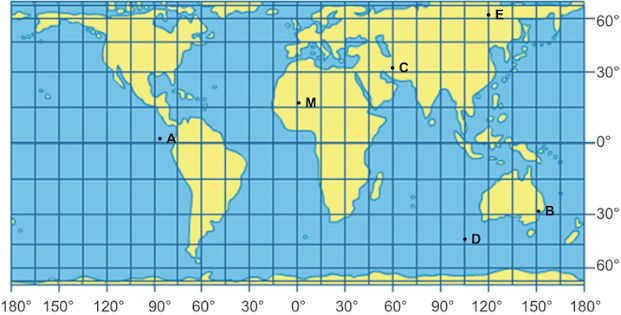
Using the information provided in the table, you can determine the latitudes in the north and south and complete the table. The formula to calculate the latitude is φ = 90° – ω ± A.
The angle at which the sun’s rays hit the surface is called the angle of incidence, represented by ω.
Parallels on which the sun is directly overhead are known as the zenith, represented by A.
The geographic latitudes are represented by φ.
Determining the latitude where the sun is at its zenith
Due to the constant movement of celestial bodies in relation to each other and their own axes, the zenith of the sun shifts throughout the year from one tropic to another. This shift occurs at a rate of approximately 1° every four days (or 3.8 days to be more precise), which equals 2° per week.
When determining the latitude of the sun’s zenith, the following raw numbers can be used as a reference.
For instance: when calculating the latitude where the sun will reach its zenith on the Russian Day of Cosmonautics – April 12, you must calculate the number of days that have passed since the nearest reference date (which is the vernal equinox on March 21). There are 22 calendar days between the reference date and the calculated date. If the sun moves 1° in 3.8 days, then for 22 days, the change will be 22 : 3.8 = 5.7°. Since exact calculations are not necessary in this case, we can round the value to 6° – this represents the angle at which the sun will change in the direction north of the equator.
Therefore, if the sun was at the zenith above the equator on March 21, it moved 6 ° north of the equator for 22 days. So on April 12, the sun will be at the zenith at latitude 0 ° + 6 ° = 6 °N.
To calculate the angle of incidence of the sun’s rays for your area on the days of the equinoxes and for today, use the following formula:
The angle of incidence of the sun’s rays = 90° – the latitude of the area (in this case, we use the latitude of Makeyevka) +/- the parallel on which the sun is at zenith.
ω = 90° − φ ± A
A diagram illustrating the relationship between zenith, nadir, and different types of horizons. Note that the zenith is opposite the nadir.
| Refer to the definition of zenith in Wiktionary, the free dictionary. |
A zenith is a point directly above a specific location on an imaginary celestial sphere. The term “above” refers to the vertical direction (opposite to the direction of gravity at that location, known as nadir). The zenith represents the highest point on the celestial sphere.
- 1 Origin
- 2 Relevance and application
- 3 See Also
- 4 References
- 5 Literature
Etymology
The term “zenith” originates from a misinterpretation of the Arabic phrase سمت الرأس (samt al-ras), which translates to “direction of the head” or “way over the head”. This misinterpretation occurred during the Middle Ages (specifically in the 14th century) by Latin scribes, and it may have been transmitted through Old Spanish. The original phrase was then abbreviated to “samt” (meaning “direction”) and mistakenly spelled as “senit” or “cenit”. Furthermore, the letter “m” was misread as “ni”. Eventually, through the evolution of the term in Old French as “senif”, “zenith” emerged in the 17th century.
Relevance and utilization

The shortest shadows of trees on Earth occur when the Sun is directly overhead, known as the zenith. This phenomenon occurs only at solar noon on specific days in the tropics, where the latitude of the trees and the declination of the Sun are equal.
The term “zenith” can also refer to the highest point, path, or level reached by a celestial body on its daily visible path around a specific observation point. This definition is often used to describe the position of the Sun (“The Sun has reached its zenith.”), but astronomers recognize that the Sun does not have its own zenith and is only at its zenith when it is directly overhead.
The Sun attains its highest point above the observer’s horizon, known as the zenith, when it is at an angle of 90°. This phenomenon only occurs between the Tropic of Cancer and the Tropic of Capricorn. In Islamic astronomy, the zenith of Mecca is used as a reference point for determining the direction of prayer, or qibla, by observing the shadows twice a year on May 27/28 and July 15/16.
Throughout the day, the Sun not only reaches its zenith but also its nadir, the point directly opposite the zenith. In locations antipodal to each other, this occurs 12 hours apart from solar noon.
In the field of astronomy, the altitude in the horizontal coordinate system is equivalent to the zenith angle, which represents the additional angles between the horizon and the vertical line passing through the zenith. The astronomical meridian, a circle on the celestial sphere that passes through the zenith, nadir, and poles of the sky, is also determined by the zenith.
A zenith telescope is a specialized type of telescope that is specifically designed to point directly at or near the zenith, which is the point directly above an observer’s head. These telescopes are commonly used for accurately measuring the positions of stars and celestial objects, as well as for simplifying the design of telescopes. For example, NASA’s Space Debris Observatory and the Large Airborne Telescope are both zenith telescopes due to their use of liquid mirrors, which restricts their ability to point in any direction other than straight up.
In a similar vein, the International Space Station utilizes the terms “zenith” and “nadir” to describe directions within and around the station relative to Earth, rather than using the conventional “up” and “down” directions.
Related Articles
Additional Resources
Recommended Reading
- Glickman, Todd S. (2000). Glossary of meteorology. American Meteorological Society. ISBN 978-1-878220-34-9 .
- McIntosh, D. H. (1972). A meteorological glossary (5th ed.). ISBN 978-0-8206-0228-8 .
- Picochet, Jacqueline (2002). Dictionnaire étymologique du français. Paris: Le Robert. ISBN 978-2-85036-458-7.
If you have already installed the Zenith Online app on your iOS device

Disable the automatic deletion of inactive applications: go to Settings → App Store → Download unused → Off
If the application is not installed, you can utilize the Zenith Online Internet Bank
1. Access https://i.zenit.ru/ on your smartphone using the Safari browser and log in to Internet Banking
2. Create an Internet Banking icon on your smartphone’s desktop




Make sure to register before you begin using the Internet Bank and the application.
Previous online service logins and passwords are not valid.
24/7 access to your finances
Register using your card number before using Online Banking and the app.








Attention Huawei/Honor users:
If you own a Huawei/Honor device and cannot access the Google Play Store, we recommend using the i.zenit.ru online banking platform.
How to sign up?
To begin, download and install the Zenit Online for Android application from the official website. You can access the Internet Bank at i.zenit.ru.
To register, simply provide your Zenit card number and the mobile phone number associated with your bank account for SMS notifications.
Create a unique login and password, then proceed to log in. It is important to adhere to the recommended guidelines and safety precautions when using online services.
Online banking offers more benefits
- Enjoy higher interest rates when you open deposits through the mobile application.
- Get reduced rates on loans when you apply through the mobile application.
- Pay for mobile, internet, and other services without any commission fees.
- Benefit from favorable currency exchange rates that are almost equivalent to those on the stock exchange.
- Enjoy free transfers using phone numbers and account details within certain limits, as well as commission-free payment for housing and utility services with the “Privilege Card”.
Everyday services
- Transfer funds to members of the Quick Payments System using their phone number or to any bank using their card number.
- Pay bills and invoices by scanning QR codes.
- Transfer money between your bank accounts without the need for SMS verification.
- Perform currency conversion operations and specify the desired amount in any convenient currency.
- Repay loans, even if they are from other banks.
- Link cards from other banks to your account.
- Easily make transfers by providing recipient details such as name, BIC, or TIN, with the system automatically filling in the necessary information.
- Make payments for over 500 different types of services, including mobile communications, utilities, e-wallets, and more.
- Get a comprehensive map of all our offices and ATMs, including partner ATMs. You can even build a route to your desired location or view addresses in a convenient list format.
- Access a unified transaction history that allows you to easily filter by products, terms, and search by transaction amount. Finding specific transactions has never been easier!
- Analyze your expenses in detail using our advanced analytics tools. Filter by products and time periods, and even view your spending by category or individual outlet.
- Know the exact commission amount before making a transaction. Our system will calculate it for you and display it in your transaction history.
- Stay informed about the limits on free transfers and cash withdrawals by cards. We make it easy for you to keep track of your financial activities.
- Track your cashback rewards in the transaction history and see how your expenses contribute to its calculation. It’s a great way to maximize your savings!
- And that’s not all! We offer many more exciting features to make your banking experience even better.
Tariffs, terms and conditions, instructions
The Internet Bank can be accessed through the browser, just like any other website, at i.zenit.ru, making it convenient for use on desktop computers or tablets. For smartphones, we have developed a dedicated application called Zenit Online.
When it comes to online banking, we prioritize the use of modern protection and encryption methods to safeguard your information. Additionally, we have implemented automatic session termination after 10 minutes of inactivity and account lockout in case of repeated incorrect login attempts.
It is crucial that you remain vigilant as well. Do not disclose your complete card number, expiration date, and CVC/CVV code to anyone, and do not share your login credentials, password, or SMS codes for verifying your actions. You should only provide the code word for your identification at the bank if you initiate the call, not if you are answering an incoming call. If you have any doubts or suspicions, contact the bank directly to verify the information.
In order to register, you will need a card issued by our bank along with a corresponding PIN and the cell phone number that you provided during the card issuance process.
To get started, go to your phone’s app store and download the “Zenit Online” application. Once downloaded, install the app on your phone. Once installed, open the application and enter your card number. After entering your card number, click on “Continue”. Next, enter your mobile phone number. You will receive an SMS with a verification code. Enter the verification code and then choose a login and password. You can also set up a short code and fingerprint scan for easier access to the app.
In order to register, you will need a card from our bank with a PIN already set up, as well as the cell phone number that you provided to the bank when you got the card.
Open your browser and go to i.zenit.ru. Click on the “Registration” tab located at the top right corner of the page. Enter your card number and click on “Continue”. Next, provide your cell phone number and wait for an SMS with a verification code. Once you receive the code, enter it and choose a login and password for your account.
Please note that registration is only possible with a card number. If you want to access the Internet Bank and the application, you can visit the bank’s office and apply for a free instant Visa Quick Welcome or Mastercard Quick Welcome card.
The process of registering the “Champions Club” card is different from registering regular bank cards, so you won’t be able to use the “Zenit Online” system. TATNEFT’s Club of Champions application will be updated for these cardholders.
- at ATMs of Zenith Bank and its partners;
- through the bank’s hotline;
- via SMS notification service.
You can use our online service card2card.zenit.ru to transfer money to and from your Club of Champions card at Zenit Bank’s rates. The card can be topped up in cash without a fee at ATMs of Zenit Bank, Alfa-Bank, Otkritie Bank, Moscow Credit Bank, and Elexnet terminals.
- access the “Payments” section in the application;
- In the “Payments” section, you can scroll to the left on the line that displays different categories of services until you see the option for “Loan Repayment”.
- Once you have found the “Loan Repayment” item, click on it and you will be taken to a form where you can fill in the necessary information with the help of prompts and instructions.
If you encounter any difficulties with logging in using a short code, fingerprint, or Face ID, it is recommended to restart your phone and re-register by selecting “I am not *Your name*” at the bottom of the login screen. Then, choose “Reset code” and click on “Restore access”. If these steps do not resolve the login issues, please contact [email protected] or the bank’s contact center for further assistance.
It is advisable to reboot your phone and then proceed with updating or downloading the application. Additionally, please ensure that there is sufficient available memory on your phone for the application to function properly and that your Internet connection is stable. If you continue to experience difficulties, please reach out to [email protected] or contact the bank’s customer service center.
If you are using a Huawei/Honor device and cannot access the Google Play Store, please utilize the i.zenit.ru Internet Bank.
All users using version 1.7.0 and newer already have the ability to receive push notifications regarding events in the application. This notification category includes alerts about incoming money transfers, fines or taxes, insufficient funds for a scheduled payment, reminders about loan payments, and others. If you are not receiving push notifications, we recommend checking your connection in the More – Notifications – Settings tab. Alternatively, you can log out of the application and log back in using your username and password.
Please be aware that if you have connected push notifications and then switched to a different device, you will need to reactivate notifications on the new phone. At the same time, notifications will be disabled on the old device.
Only customers who use the SMS-informing service will have access to push notifications on card transactions. To activate this service, select the desired card and go to the “Settings” tab, then choose “SMS or push notifications”. If the service is already activated, you will receive push notifications instead of SMS. The cost of the notification service will remain the same.
In the event that there is no internet connection and push notifications cannot be delivered, you will receive the notification via SMS.
If you have enabled push notifications in the app but they are not appearing, you should check the settings on your device. Difficulties may arise if:
- The app does not have the necessary permissions, such as autorun, background connections, 3G, or Wi-Fi access;
- The notification settings prohibit the display of pop-ups or are set to silent mode;
- Background mode is enabled, which helps to reduce power consumption for infrequently used apps and restricts internet data usage.
Any received push notifications are saved within the app. To view them, simply navigate to the “More” section and select “Notifications”.
Push notifications are brief messages sent by the app. For instance, if you receive a salary payment, you will receive a push notification regarding the deposit, even if you are not currently logged into ZENIT Online. The most important thing is to have an internet connection, as push notifications are transmitted through secure channels with encryption. In the event of no internet access, you will receive an SMS instead.
How to establish a connection
Users who have the application version 1.7.0 or higher installed can take advantage of push notifications. To activate them, go to the “More” – “Notifications” – “Settings” section or simply log out of the application and log back in using your login credentials.
If you want to receive push notifications regarding your card transactions, you need to enable the notification service. Go to the “Settings” – “SMS or push notifications” tab and select the desired card. If the service is already activated, you will start receiving push notifications instead of SMS. The cost of the notification service will remain the same.
Please be aware that if you have enabled push notifications and subsequently changed your device, the notifications will be activated on the new phone once you log into the application using your login and password. In this scenario, the notifications will be disabled on the old device.
Differences in connection between various devices
If you have enabled push notifications in the app but are not receiving them, please ensure that you check the security, synchronization, power saving, and other settings on your device. These settings may impact the delivery and display of push notifications.
To resolve this issue, please follow these steps:
- Go to the “Security” app (this is a separate app with a green icon, not an item in the settings) – Applications – Permissions – Autorun
- In the “Security” app, navigate to Data transfer, then Network connections. Check if the “ZENIT Online” app has access to both 3G and Wi-Fi.
- In the same section of the “Security” app, go to Data transfer, then Network connections. Tap on the three dots in the top right corner and select Background connections. Make sure the background connections feature is enabled for the ZENIT Online app.
- In your device’s Settings, go to Wi-Fi, then Advanced settings. Check the advanced options available.
To enable notifications and select notification type:
- In the “Settings” app, go to Notifications, then App notifications. Find the ZENIT Online app and make sure the following options are enabled:
- Show notifications
- Badge on the application icon
- Pop-up notifications
- Lock screen notifications
- Sound alerts
- Vibration alerts
- Light indicator
- Go to Settings – Applications – locate the desired application and enable the pop-up display in the Permissions section.
Enable screen wake for notifications:
Go to Settings – Lock & Protect (Lock Screen) – Wake when notifications are received.
Adjust background settings:
- In “Settings” – Power and Performance – Select Applications – for the “ZENIT Online” app, you can try enabling “Smart Mode”. If this doesn’t work well, select “No Restrictions”.
- In the same section in “Settings” – Power and Performance – Scenarios – On/Off – you can activate Smart Mode, which will disable notifications while you’re sleeping.
- If necessary, you can verify the item in additional permissions “Run in the background”: in “Security” – Applications – Permissions – Other permissions – Required application – Run in the background.
Configuring the operating mode, power saving:
Also, optionally check:
“Security” – Power – Settings (the gear on the top right):
Preventing the app from being unloaded from memory (when necessary):
Press the left touch button, in the list of running or recent apps, tap and hold the “ZENIT Online” app, once more buttons appear, tap on the “lock”.
In some cases, it is necessary to additionally change the application control settings in the battery settings. Open “Settings” – Battery and performance – Application activity – select “ZENIT Online” and set “No restrictions”.
After adjusting the settings, it is important to restart the device
It is possible that the application may not initiate after restarting the device or when it is unloaded from the RAM. To resolve this issue, please enable automatic restart for the application in the Security Center on your device.
ZenitBet has been in operation since 1998, offering customers the opportunity to place sports bets and win money. Zenitbet BC is licensed by Curacao. We strive for seamless operation, and our 24-hour support service is always there to assist. We underwent registration in TSUPIS in 2017, and Russian users also have access to the official website. The minimum deposit required is 10 rubles, making the game accessible to all individuals. We offer a selection of currencies, including rubles, dollars, tenge, and euros.
The official website for online gambling
ZenitBet has created an easily navigable website with a modern and appealing design. The information is conveniently organized into various sections:
- Live betting;
- Pre-match betting;
- Results;
- Live results;
- News updates;
- Statistics;
- Rules and regulations.
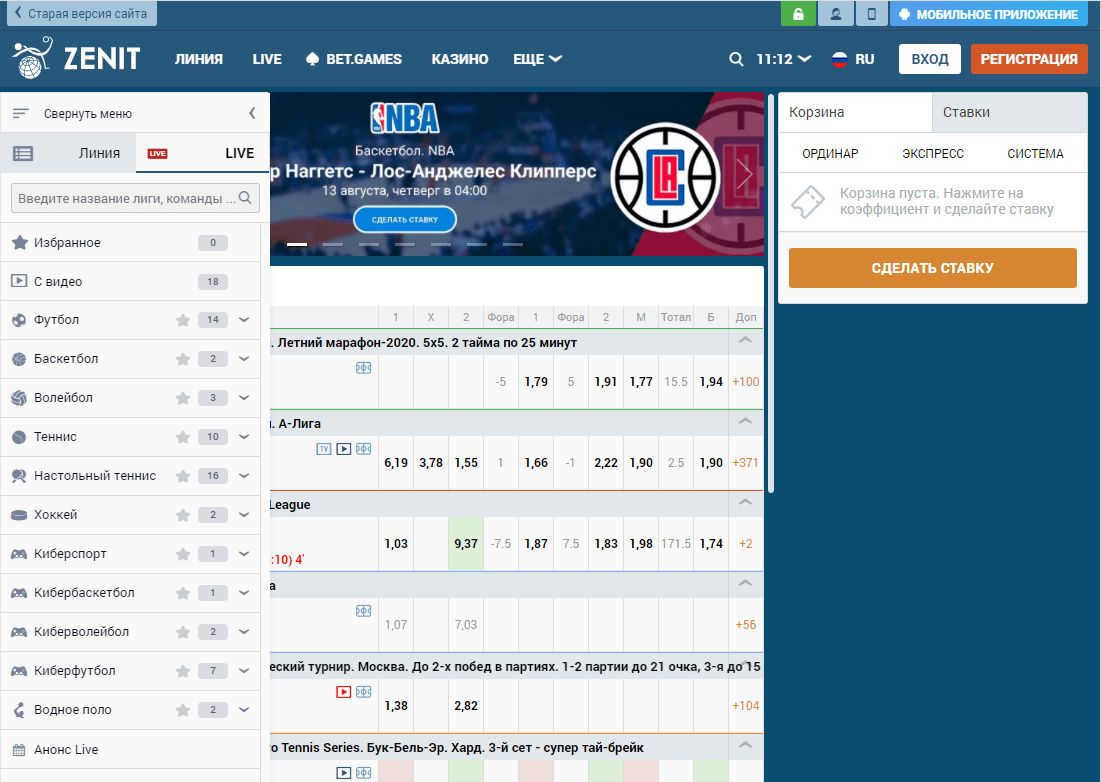
The company offers a wide range of options for betting on various sports:
- Football;
- Volleyball;
- Hockey;
- Basketball;
- Tennis;
- Table Tennis;
- Cybersports;
- Baseball;
- Billiards.
Located in the lower right corner, there is a chat window in green color. It serves as an online platform to accept messages from bettors. The operators are available 24/7.
bk zenith’s Mobile Version
At bk zenith, we value our customers’ needs and are committed to providing them with easy access to our resources. That’s why our developers have created a mobile application specifically designed for phones. With this app, you no longer need to rely on a desktop computer to enjoy our services. The mobile application offers all the features and functions available on our website. Whether you want to deposit or withdraw funds, place bets on sports, or check your personal account, you can do it all conveniently through our mobile app.

The mobile application is not subject to blocking by Roskomnadzor. News is highlighted, we receive notifications about new promotions and bonus programs. The app functions with fast internet connection, has a small file size, and is compatible with both Android and IOS devices.
Registering at Zenitbet
Registered users have access to a wide range of services. To create an account, you need to visit the official website and locate the “Registration” section in the top right corner, highlighted in red. You will be asked to provide your phone number, enter a promo code, and review the following rules: privacy policy, consent to the use of personal data, terms and conditions, and gambling rules.
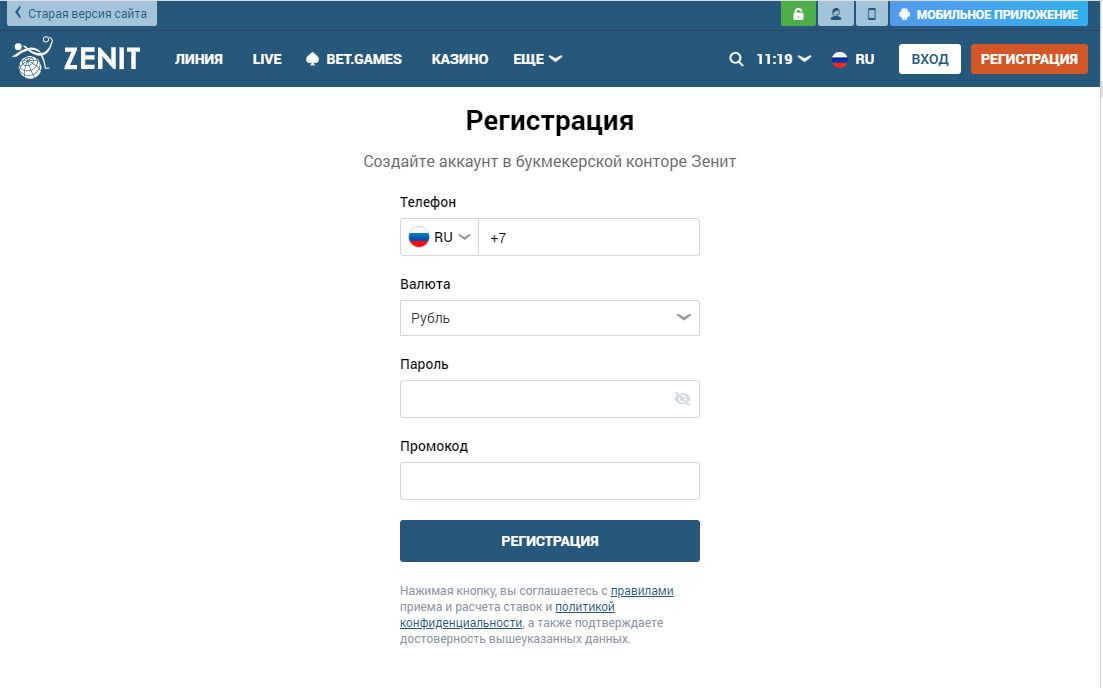
Individuals who are below the age of 18 are prohibited from engaging in betting activities. To ensure compliance with this policy, users are required to undergo an identification procedure, which involves submitting a scan of their passport and obtaining confirmation from the administration. Furthermore, authorized users must provide their login credentials, including their password.
Zenitbet website mirrors
Occasionally, the regulatory authorities may block the main page of the Zenit Bet website. However, the bookmaker always ensures access by creating mirror sites. These mirror versions are exact replicas of the main site, featuring the same design and functionalities. In the alternative version, users do not need to register again; they can simply log in with their existing credentials. The links to the working mirrors can be found in:
- Social media communities;
- Email communications;
- The official website of Zenit Bet.

Available lines and bets
The line displays comprehensive information regarding upcoming sports events, including the participants, opponents, and odds. This information is accessible in a dedicated section. To access it, simply click on “Live” in the top panel. Clicking on a specific game within the line will unveil a wide range of available options. Some games even feature live broadcasts, providing bettors with insight into the potential outcome of their bets.
In the upper left corner, beneath the “Login” button, customers can find information regarding their personal bets. These bets are categorized into three types:
- Ordinaries – bets placed on a single event and its corresponding outcome;
- Systems consist of multiple bets combined into one wager. If a certain number of the individual bets win, the entire system bet is successful.
The bookmaker determines the number of bets and the size of each bet in advance.
Pre-match
A player who plans ahead and carefully considers their options is highly regarded. That’s why there is a section called “Pre-match” where individuals can place bets on events that will occur in the future.
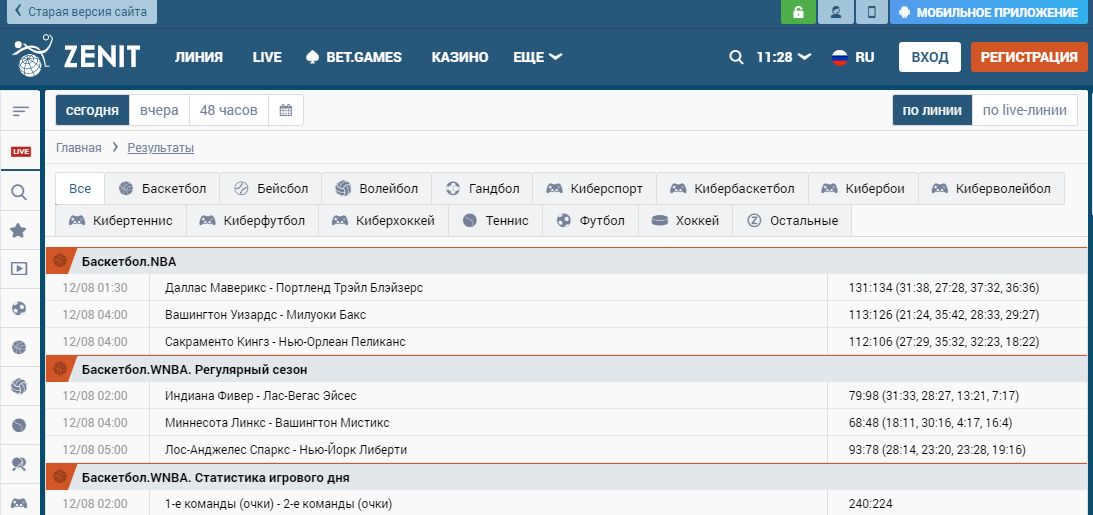
Live
For those who enjoy the authentic casino experience, we have a live mode that allows you to bet on the match in real time and increases your chances of winning. Our website provides a comprehensive display of the online grid of sporting events, making it very convenient for you. You can easily see:
- The current match time;
- The teams playing;
- The opponents;
- The odds for each match.
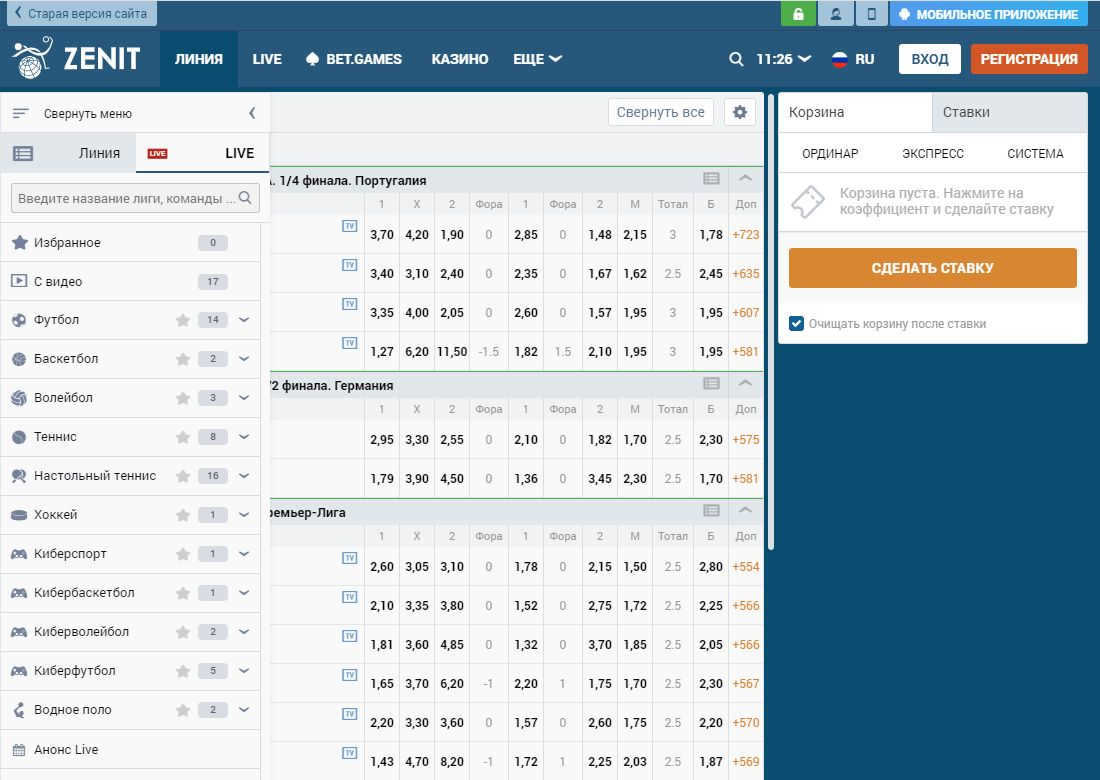
Deposit Bonus Program
New players at Zenit bet are greeted with a bonus program and welcome prizes that include free spins. The welcome gift consists of free spins valued at 3,000 rubles, which is equivalent to approximately 10% of the initial deposit amount. The funds are credited within one hour and are subject to a 5x wagering requirement. The bonus remains valid for two weeks and can only be used on regular games.

Zenith Bet Casino
Aside from the sportsbook, Zenith Bet also offers a casino. The casino is available for Silver, Gold, and Platinum coupon holders. These players have the chance to win exciting prizes such as cars, smartphones, TVs, and tickets to major matches. Each coupon type has its own specific terms and conditions, including the minimum bet size and odds requirement.

Ways to Deposit
There are several options available to fund your account (the method can be selected during registration):
- Electronic cards:
- QIWI;
- Yandex Money.
- Mobile operators:
- Beeline;
- MTS;
- Tele2;
- Megafon.
- VISA;
- Mastercard.






